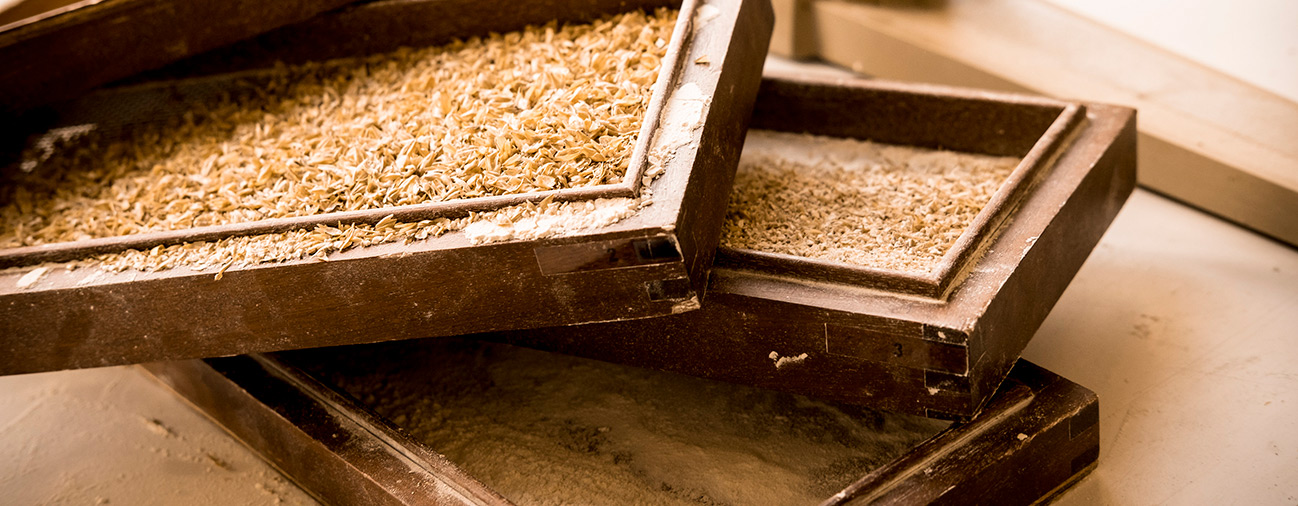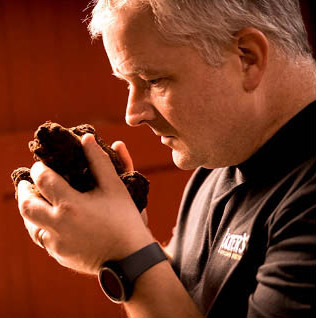
OUR CRAFT
1. Malting
Our whisky is notable for its high portion of fully peated single malt. Traditionally, barley is steeped in water and laid out on malting floors to allow the grains to germinate using controlled temperatures. Peat fires are then used to infuse the green malt with sweet smokiness whilst drying in the kiln. The degree of smokiness of the malt whisky depends on how long the malt was dried over the peat fire. Once dried the malt can be kept for several weeks.
In recent years it has become fashionable to use peated malt. However, The Ardmore is one of the few single malt distilleries that has consistently used it since the early years.

Our craft
2. Mashing
Using a Malt Mill, the malt is ground into grist, which is a mixture of husks (which hold the smoky peat aromas), gritty starch particles and fine flour. Local highland spring water is drawn from the local Knockandy Hill above us and mixed with the grist in our copper domed Mash Tun. With heat, the sugars extract from the mash grist, creating a sugary solution called the wort.
3. Fermentation
To convert this wort into alcohol it is cooled down then infused with yeast in our old style Douglas Fir wooden washbacks. The yeast metabolises the wort during fermentation and creates an alcoholic beer called Wash.

Our craft
4. Distillation
Here at Ardmore we have eight uniquely shaped copper stills, all working to create a smooth spirit. To create the required new make spirit, the wash is distilled twice in traditional copper stills. Firstly a pass through the Wash still and a second pass through a Spirit still. Stills are similar to large kettles heating the wash so the alcohol vapours rise to pass over the wash still through the Lyne arm, before being passed through condensers to return to liquid. This produces a liquid known as low wines that is then forwarded to the Spirit Still where distillation is repeated and the heart of the second distillation is retained to be matured into single malt whisky.
5. Maturation
The purest spirit from the heart, or middle cut of the second distillation is collected in the spirit safe. It is then filled into oak casks such as barrels, hogsheads or puncheons for a period of maturation. By law, the spirit cannot be called Scotch whisky until it has matured in Scotland for at least 3 years. Typically, much of the spirit will be matured for much longer, however it is the time spent in the cask that allows the spirit to develop in flavour and acquire its renowned golden colour.

Our craft
6. Blending
It is the composition of The Ardmore single malt blended with a number of different malt & grain whiskies that creates our best-known Teacher’s Highland Cream. William Teacher experimented with many blends and THC was his masterpiece - the one he gave his name to. Like all our blends it has an unusually high portion of fully peated single malt whisky. To this day, The Ardmore has never varied, and so Teacher’s Highland Cream has continued its distinctive, rich flavour.












